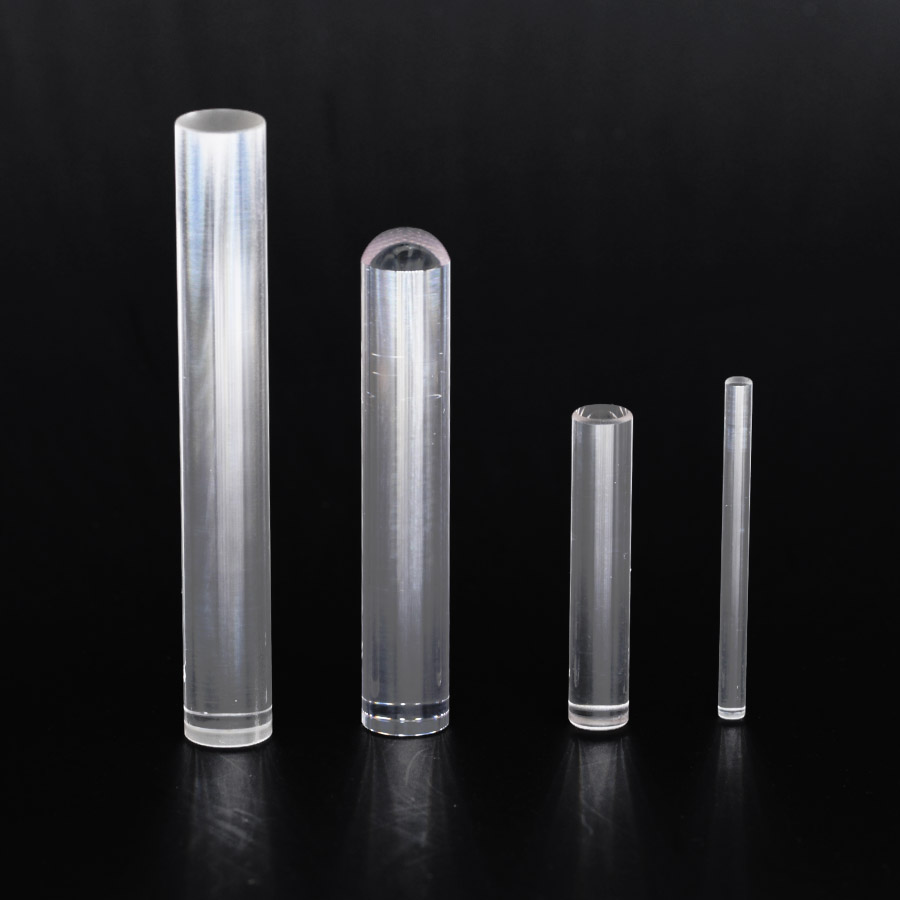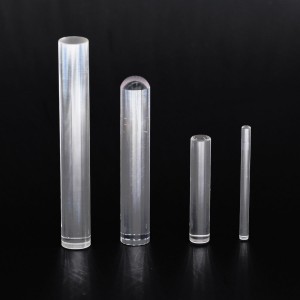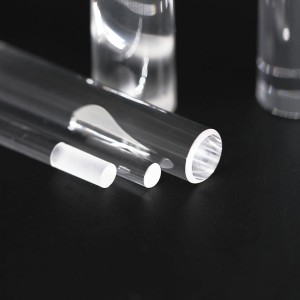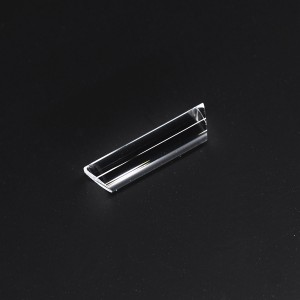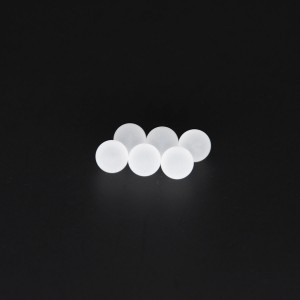Optical Sapphire Crystal Rod Lens
Sapphire Rods can be used as Rod lenses, Plunger, Bearings, Wire Guide, ETC.
Why more and more customers choose sapphire today? Not only because of the hardness grade of sapphire, also the superior Physical properties and Mature Technology.
| Optical Properties | |
| Refractive Index | 1.769//C-axis,1.760±C-axis at 0.5893μm |
| Visible Light | >85% Excellent |
| Infrared | 85% 0.75~4μm,70% 4.7μm, 50% 5.2μm |
| Ultraviolet | 80% 0.4~0.3μm,60% 0.28μm, 50% 0.2μm |
| Mechanical Properties | |
| Mohs‘ Hardness | Mohs9,Knoop≥1700kg/mm2 |
| Modulus of Elasticity | 3.5x106~3.9x106 kg/cm2 |
| Compressive Strength | 2.1x104kg/cm2 |
| Tensile Strength | 1.9x103kg/cm2 |
As Sapphire was Lab-Created in 1916, Sapphire and sapphire tooling method became widely used and more cheaper than the time it’s born. From the Ingot to Rods there are several steps:
Crystal Growingà OrienteeringàDrillingàCuttingàRoundingàGrindingàPolishing.
Sapphire Rods are likely to use as wear resistant accessories more widely, but as human technology expanding, sapphire rod lens will take more place in the future. Rod lens is polished on the circumference and ground on both ends. Optical performance is similar to a cylinder lens. Collimated light passing through the diameter of the rod will be focused into a line. The addition of this product line is part of a continued effort to support current trends toward miniaturization.
Typical Sapphire Rods.
Raw Sapphire Rods: All fine Ground (Cloudy Surfaces)
Sapphire Rod Lens: Top & Bottom Optical Polished Best Surface Flatness Up to λ/10 @633nm
Sapphire Corn Rod: Any Degree, One/Two Ends. Ground/Polished, Customized By Client.
Domed Sapphire Rod: One/Two Ends Domed, Ground/Polished, Customized By Client.
All Transparent Sapphire Rods: Cylinder Surface Polished Transparent, Top & Bottom Optical Polished


